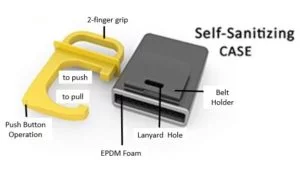In this article, we will explore the fascinating world behind the scenes of your electrical devices. We will delve into the key components that make these devices function smoothly and efficiently.
From power sources to control systems, we will uncover the inner workings of your everyday gadgets. So, let’s dive in and unravel the mysteries of your electrical devices.
Have you ever wondered what goes on behind the scenes of your electrical devices? How do they transform electrical energy into useful functions? It all comes down to the intricate interplay of various key components.
In this article, we will explore these components and their roles in making your devices work seamlessly. Let’s also know about CHINT Universal Relay .
Key Components of Electrical Devices
-
Power Sources
One of the essential elements of any electrical device is the power source. Without a reliable power source, your devices would simply be lifeless. Let’s take a look at two common types of power sources:
-
Batteries
Batteries are portable power sources that store electrical energy. They come in various shapes and sizes, catering to the requirements of different devices. Batteries utilize chemical reactions to generate electricity, allowing your devices to operate without being tethered to a power outlet.
-
Power Supply Units
Power supply units (PSUs) are responsible for providing a steady and regulated supply of power to your devices. They convert the alternating current (AC) from the power outlet into direct current (DC) suitable for electronic circuits. PSUs ensure that your devices receive the appropriate voltage and current required for their optimal performance.
-
Circuitry and Wiring
Behind the sleek exteriors of your electrical devices lies a complex network of circuitry and wiring. These components play a crucial role in directing and controlling the flow of electricity. Let’s explore two key components in this realm:
-
Printed Circuit Boards (PCBs)
Printed circuit boards (PCBs) serve as the backbone of electronic devices. They provide mechanical support and a platform for interconnecting various electronic components. PCBs consist of thin layers of conductive material etched onto an insulating board, forming intricate circuits that allow electricity to flow efficiently.
-
Conductors and Insulators
Conductors and insulators are fundamental components of electrical systems. Conductors, such as copper or aluminum, facilitate the flow of electricity, enabling the transfer of energy within the device. On the other hand, insulators, like rubber or plastic, prevent the flow of electricity and ensure that it remains confined within the intended circuits.
-
Control Systems
Control systems are responsible for managing and regulating the operations of your electrical devices. They ensure that the device responds appropriately to user input and external conditions. Let’s take a closer look at three key components in control systems:
-
Microcontrollers
Microcontrollers are miniature computers embedded within electrical devices. They process data, execute instructions, and provide control over various functions. Microcontrollers act as the brain of the device, coordinating and directing operations based on programmed instructions.
-
Sensors
Sensors are sensory organs of electrical devices, enabling them to perceive and respond to the environment. They detect changes in temperature, light, pressure, or other physical parameters and provide input to the control system. Sensors allow devices to adapt and react intelligently to their surroundings.
-
Relays
Relays are electromechanical switches that control the flow of electricity within a device. They act as intermediaries between low-power control signals and high-power circuits. Relays play a crucial role in isolating sensitive components, protecting them from excessive current or voltage, and ensuring safe operation.
-
Displays and User Interfaces
Displays and user interfaces are the windows through which we interact with our electrical devices. They provide visual feedback and enable us to control and monitor device functions. Let’s explore two common components in this domain:
-
LCD Screens
LCD screens (Liquid Crystal Displays) are widely used for visual output in devices such as smartphones, televisions, and calculators. They utilize liquid crystals that change their optical properties when an electric current is applied, producing images and text for the user to see.
-
Touchscreens
Touchscreens have revolutionized the way we interact with devices. They combine display and input functionalities, allowing users to directly manipulate objects on the screen through touch. Touchscreens have become commonplace in smartphones, tablets, and many other modern devices.
Conclusion
Understanding the key components behind the scenes of your electrical devices gives you a deeper appreciation for the technology that surrounds us. From power sources to control systems, each component plays a vital role in ensuring the smooth operation of these devices. So, the next time you use your smartphone or turn on your television, take a moment to marvel at the intricate engineering that makes it all possible.


